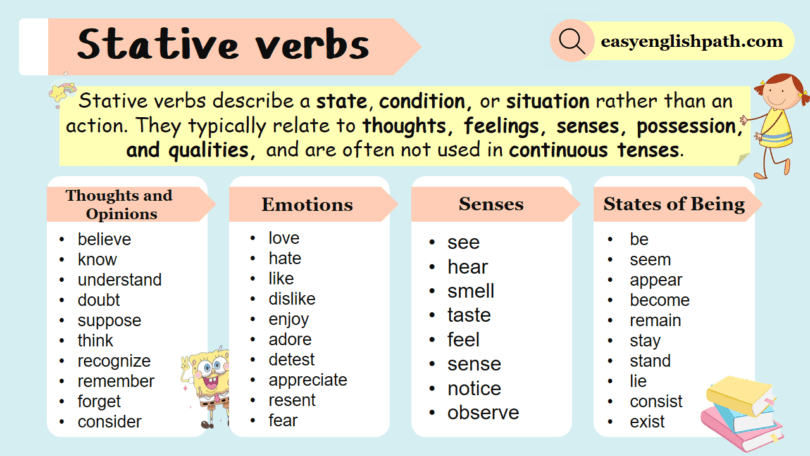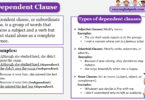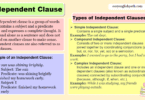Stative verbs, also known as state verbs in grammar, are words that show feelings, thoughts, or things we have. They are different from action words because they describe a state or condition rather than an action. Stative verbs examples include, “like,” “love,” “belong,” and “seem” are stative verbs. Understanding stative verbs helps us talk about how we feel or what we have. It’s important to know them because they help us express ourselves better and tell others about our feelings or possessions. So, learning about stative verbs which are the main types of verbs can make talking and understanding each other easier and clearer.
Stative Verbs Definition:
These are also known as state verbs, refer to verbs that describe a state or condition rather than an action. These verbs express a state of being, feeling, possession, or relationship. Unlike dynamic verbs, which describe actions that can be seen or measured, stative verbs typically describe mental or emotional states, senses, or qualities.
Examples:
- To be: She is happy.
- To have: He has a car.
- To like: They like ice cream.
- To seem: It seems difficult.
- To belong: The book belongs to me.
- To prefer: She prefers tea over coffee.
- To know: They know the answer.
Categories of Stative Verbs:
- Emotional states
- Mental states
- Sensory perception
- Possession
- Relationships
- States of being or existence
- Opinions and preferences
Emotional States:
Verbs that describe emotions or feelings.
Examples:
- love
- hate
- like
- dislike
- adore
- detest
Mental States:
Verbs that describe mental conditions or perceptions.
Examples:
- know
- believe
- understand
- remember
- forget
- realize
Sensory Perception:
Verbs that describe sensory experiences.
Examples:
- see
- hear
- taste
- smell
- feel
Possession:
Verbs that indicate ownership or possession.
Examples:
- have
- own
- possess
- belong
- lack
Relationships:
Verbs that describe relationships between people or things.
Examples:
- belong
- consist
- include
- involve
- concern
- depend
States of Being or Existence:
Verbs that describe states of existence or being.
Examples:
- be
- exist
- live
- remain
- stay
- stand
Opinions and Preferences:
Verbs that express opinions, preferences, or attitudes.
Examples:
- prefer
- dislike
- love
- hate
- desire
- wish
Difference Between Stative Verbs and Linking Verbs:
| Stative Verbs | Linking Verbs |
| Stative verbs describe a state or condition. | Linking verbs connect the subject of a sentence to its complement. |
| They express emotions, thoughts, senses, or ownership. | They do not show action; instead, they equate or describe the subject. |
| Stative verbs do not usually indicate action | Linking verbs are often used to describe appearance, state of being, or condition. |
| They describe a permanent or ongoing state. | They can be followed by adjectives, nouns, or phrases. |
| Examples include “love,” “know,” “belong,” and “see.” | Examples include “is,” “am,” “are,” “seem,” and “become.” |
List of Stative Verbs
- Believe
- Belong
- Consist
- Contain
- Deserve
- Dislike
- Doubt
- Feel
- Forget
- Have (when expressing possession)
- Hear
- Hate
- Imagine
- Know
- Like
- Love
- Matter
- Mean
- Need
- Prefer
- Remember
- Resemble
- See
- Smell
- Sound
- Suppose
- Think
- Understand
- Value
- Want
- Wish
- Wonder
- Appreciate
- Adore
- Admire
- Enjoy
- Tolerate
- Regret
- Accept
- Deny
- Doubt
- Agree
- Disagree
- Recognize
- Believe
- Trust
- Feel
- Appear
- Seem
- Consist
Stative Verb Examples:
- She loves music.
- He owns a car.
- They understand the lesson.
- The flowers smell sweet.
- Sarah believes you.
- I like ice cream.
- My grandfather remembers everything.
- The dress belongs to her.
- We appreciate your help.
- He hates spiders.
Stative Verb Exercise:
1. Which of the following is a stative verb?
a) Run
b) Feel
c) Jump
d) Swim
2. Identify the stative verb in the sentence: “She ____ her job.”
a) Loves
b) Runs
c) Swims
d) Jumps
3. Choose the stative verb: “The coffee ____ delicious.”
a) Tastes
b) Drives
c) Runs
d) Jumps
4. What is the stative verb in this sentence: “He ____ the answer.”
a) Knows
b) Plays
c) Rides
d) Eats
5. Which word is the stative verb in the sentence: “They ____ a new car.”
a) Have
b) Drive
c) Jump
d) Run
Answers:
- b) Feel
- a) Loves
- a) Tastes
- a) Knows
- a) Have
You May Also Like this






